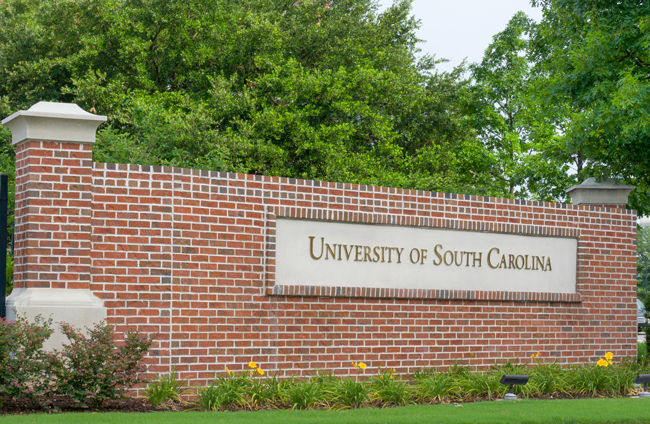 Source: Shutterstock
Source: Shutterstock
Credit unions use campus branches in different ways, but all have faced challenges in the pandemic.
In Maine, campus branches are integral to University Credit Union ($357.4 million in assets, 28,445 members as of June 30). Three of its branches are located on campuses of the state's public university system, and the other five near a campus.
Recommended For You
In South Carolina, Founders Federal Credit Union, based on the state's northern edge, opened a branch five years ago on the University of South Carolina campus in Columbia, 60 miles to the south in the Midlands section of the state.
The campus branch served as a beachhead to break into the state's capital city market while cultivating ties with two intense college rivalries that span generations and populate every South Carolina county from the mountains to the sea.
For both credit unions, campus branches closed last spring after the World Health Organization declared COVID-19 a pandemic March 11. Those branches have reopened this fall, but contacts with students are fewer and account openings are down.
Founders is based in Lancaster, S.C., a city with a physical distance of 40 miles south of Charlotte but a cultural distance that diminishes every year as North Carolina's biggest city extends its bedroom communities south of the border into York and Lancaster counties.
Textiles dominated those counties when the credit union was founded in 1950 as Springs Employee Federal Credit Union. Its branches still reflect the footprint of Springs Industries, which once had the state's largest network of textile mills.
The credit union, which changed its name to Founders in 1993, is now South Carolina's largest credit union based on its 31 branches in the state. Its assets were just a few bucks short of $3 billion as of Sept. 30, but it would easily surpass that mark next year if it gets approval from members and the NCUA to acquire ArrowPointe Federal Credit Union based in neighboring York County. ArrowPointe had $181.8 million in assets, 17,823 members and seven branches, many of them overlapping Founders' core area.
However, most of Founders' growth depends on building its membership further from the shadow of Charlotte and deeper into South Carolina's Upstate and Midlands areas.
One way it has chosen to do that is to work the human geography of university loyalties. In South Carolina the biggest (and loudest) tribes are the U of S.C. Gamecocks and the Tigers at Clemson University.
In 2016, Founders opened a branch just outside the Clemson campus, 200 miles west of Lancaster. The following year, Founders announced a seven-year partnership, for which the credit union could display its brand prominently in Clemson's football stadium, basketball court and other areas of campus. It also sponsored events and supported Clemson's then-new bike share program.
Founders' big move on U of S.C. came in the spring of 2015 when it won a bid to open a branch in the heart of the campus in a building called the Russell House, which houses the university bookstore, restaurants and other shops.
 Matt Nichols at his desk.
Matt Nichols at his desk. Founders asked Matt Nichols, then a 30-year-old branch manager in Lancaster County, to move to Columbia to open the branch. He grew up in Lancaster, graduated from U of S.C. in 2007 and joined Founders the next year.
"I jumped at the opportunity," he said. He was to be the face of Founders in the new market, and its mission was to get as many students, employees and staff at the university to join the credit union.
"We were looking to expand into Columbia. That was the next market we wanted to get into," he said. "The partnership with the university was our foot in the door in being able to do so."
He arrived in Columbia in June 2015 and opened the branch in July. The branch was a success, with Nichols and his crew opening 50 to 60 accounts in the first few months.
In 2016, Founders signed a $7 million, 10-year deal with U of S.C., gaining rights to rename the university's baseball stadium Founders Park and extend its name further onto campus.
Meanwhile, Founders opened two new off-campus branches in Columbia by 2018, and promoted Nichols in 2019 to vice president of the Columbia market, giving him the reins of all three branches.
 The Russell House branch on U of S.C. campus.
The Russell House branch on U of S.C. campus. For campus branches at the universities of South Carolina and Maine, the largest crop of new members are harvested during freshmen orientation. Both credit unions have planned carefully around these events so they can get the attention of the new students – and their parents.
 Stacey Young
Stacey Young Stacey Young, University CU's associate vice president of retail services, said the credit union often is creating a student's first checking account.
The credit union's campus branch managers are certified financial counselors. "It always puts our parents at ease that there's someone here that can help guide them," Young said.
Then, of course, came COVID-19.
U of S.C. shut down its campus in March, and with it the Russell House branch. There were no on-campus orientations last summer, but the university did decide to cautiously reopen in the fall.
The university gave Founders permission Aug. 3 to reopen the Russell House branch after approving its safety protocols. Founders erected plastic barriers, required masks and put decals on the floor to display proper social distancing. But it also had to limit the number of people in the branch to four – just two employees and two members.
In Maine, the pandemic created major challenges for University CU, based in Orono, home of the main campus of the University of Maine and 40 miles from the Atlantic.
Campus branches are core operations for the Maine credit union with three of its eight branches on one of the state university system's campuses.
The pandemic triggered a shutdown of University of Maine campuses, and the credit union shut all its branches to walk-in traffic March 17, allowing only drive-up service.
"All of a sudden our traffic dried up," Young said. "We had very little access to our students and faculty."
In other locations, credit unions have sent members to interactive teller machines and ATMs. However, some of University CU's interactive teller machines and ATMs were in buildings that were locked up.
"We had to think quick on our feet and reach out to campus leadership to figure out how we could get in to service them, and how our members could reach them," Young said. "In the end, they were very accommodating."
The credit union began reopening branches in June under safety protocols similar to Founders' measures: Erecting partitions, requiring masks, maintaining social distancing and limiting the number of visitors.
Maine's campuses opened at their usual times in late August, requiring students to be tested on arrival and quarantine in the dorms until they got their results. By Sept. 9, all its branches had reopened.
Some students have chosen to continue learning online. For those on campus, cafeterias aren't open and congregating is limited.
"Even though campus is open, it is a lot quieter," she said.
Freshman orientations were held online at South Carolina and Maine, and new account openings have taken a hit. In strategic planning, the credit union is thinking of the pandemic's effects as both a challenge and opportunity, Young said.
"It's one of those unknowns of COVID. We don't know if this is a permanent change or a very temporary change," she said. "We'll be flexible and fluid – that's our motto."
© Touchpoint Markets, All Rights Reserved. Request academic re-use from www.copyright.com. All other uses, submit a request to [email protected]. For more inforrmation visit Asset & Logo Licensing.






